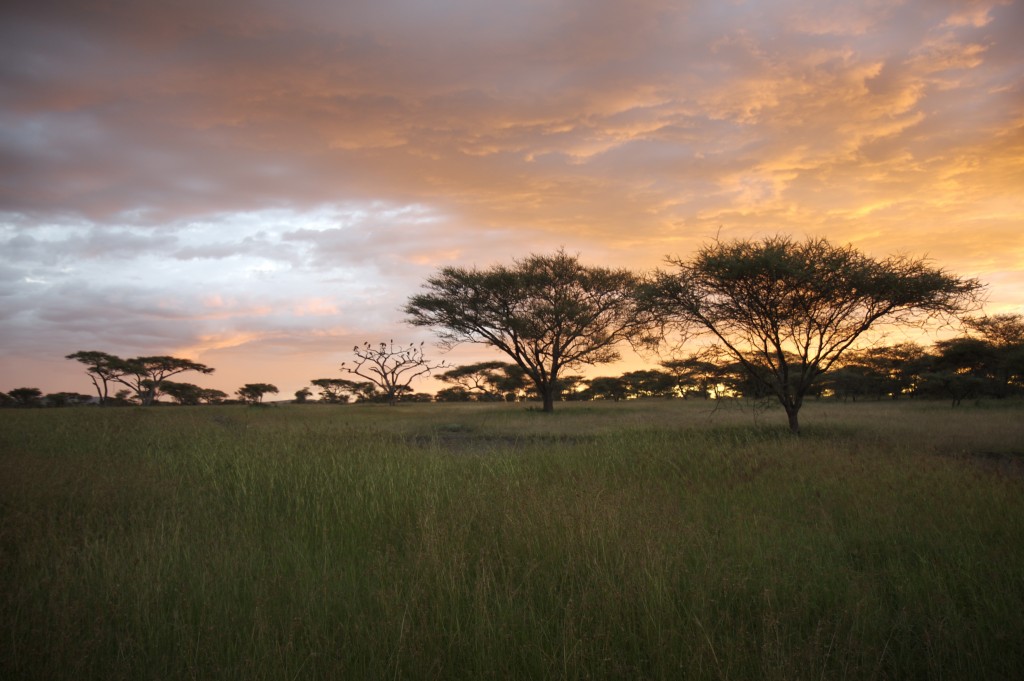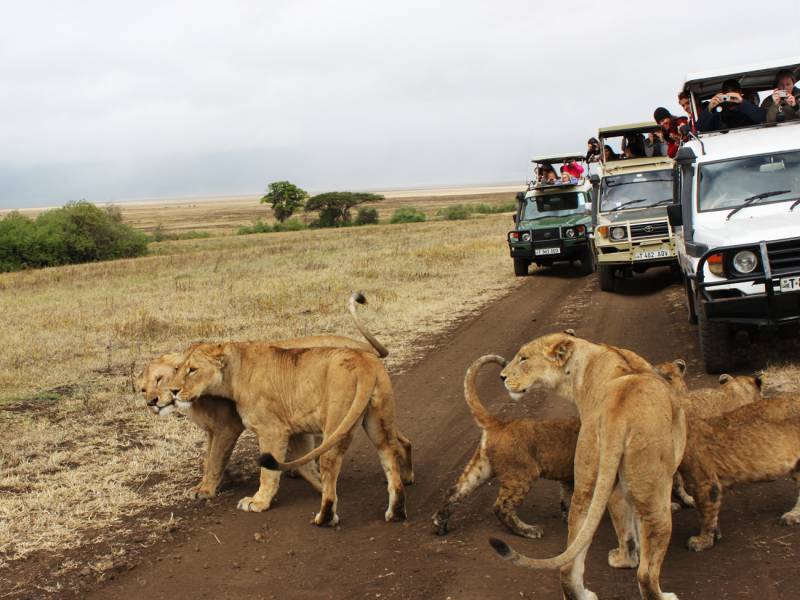
Visualize a vast, yellowish tract of short-grassy plains, gracefully interrupted by a few wind-shaped acacias and harsh rock outcroppings. African cloudless skies fuse seamlessly with this canvas of imagery. Then suddenly, this serene savannah is engulfed by an earth-moving spectacle: more than two million wildebeests, zebras, buffalos, kongoni, topi, and eland, all instinctively parading across the plains. Even on a scorching day, the stupefying sight of the great migration will find your hair on your scruff standing and send shivers down your spine– truly a primal sight like no other. Visit Serengeti and behold the unmatched beauty of nature in its rawest form.
Best Time to Visit
The best time to be in Serengeti is when the migration takes place, so plan around this phenomenon. The vast canvas would be quite lonely without the tumultuous population that continually moves to follow a cyclical need for greener pastures and the sweeping rain. January is a good month to witness population explosion in the Southern Plains when about 8,000 wildebeest calves are born every day. This will also signal the start of the brutal survival game of nature when a pride of lions engineers the siege for its tender prey. Migration can take place anytime between January and March. Please note that the migration is not an event that can be fixed or dictated. It is a cycle that occurs as dictated by the instinct of the animals and played by the rains and nature, in general. The migration moves in June or July to the north or the Western Corridor; or to the Mara and Grumeti Rivers in August.
You will see live how nature checks its population when animals, by the thousand-strong, dive into rivers teeming with crocodiles. Every November, the horde returns to Mara through the eastern part of Serengeti. The animals return to the savannah in southern Serengeti in December. Any of those periods mentioned are great for migration-watching, just avoid the months of April and May as these are the months of thunder rains and camps usually close down.
Climate
Serengeti is all sun. The dry savannah is sustained by soda lakes, the rivers up north, and the showers that sweep over it. Heavier thunder showers fall from April to May restoring life to the wild pastureland. The dry months follow from June and peaks at October. This drives the animals north to rivers in crocodile territory. Lush pastures in the southern Serengeti turn verdant green in December, also the calving season for the beasts. Winter falls from December to March, the best time to visit. Spring follows with heavy rains from April to May. Summer, between June and August, will drive the herds up north where there are rivers. The colorful flora indicates the presence of life-sustaining water.
Things to Do

Turn to adventure mode. That is the first thing you do. Be ready for the adrenalin rush, for the action and, well, the medicine kit and lots of sunscreen. In Serengeti, all your activities will focus on the overwhelming geology and the unbridled wild. Here are things you would commonly engage in.
1) Study the Park Layout and Camp Out
It is almost as big as Hawaii; worse, no streets to speak of. So smarten up and learn the geography of the park. It has four general areas: the Southern Plains, the central Seronera Valley, the Western Corridor, and the northern parts of Lobo and Masai Mara. The central Seronera Valley is where the network of rivers runs. It supports varied wildlife and the valley is very accessible and popular to travelers. Comfortable accommodations are provided by most lodges in this area. The northern parts are dominated by giraffes, elephants, impalas.
Experiencing Serengeti is best achieved by camping out. You can bring your tent and camp by yourself. Camping in public areas is allowed at USD 30 per day per person. Children below 5 years old can camp free, while USD 5 is charged for children 5 to 16 years old. If you prefer comfortable and coordinated camping, you can choose from many commercial operators who provide food and other amenities.
2) Visit a Maasai Village
The Maasai are an African tribe who used to inhabit areas in the Maasai Mara and its vicinities. Join a tour group to the village of these proud people, and you may even chance upon the traditional dances of the Maasai.
3) Get on a Hot Air Balloon Ride
Appreciate the varied landscapes and game sightings from several feet above and go whichever the wind blows. Stay overnight at one of the lodges that operates the balloon safari to get a bird’s eye view of Serengeti from an elevated location, not to mention floating and wind-blown. There are several lodges operating the floater. From the central plains there are the Serena Lodge, Seronera Wildlife Lodge, Sopa Lodge, and Mbuzi Mawe Camp. From the Western Corridor there are 3 more camps. The package will provide one overnight stay, the hover over the Serengeti, and a champagne breakfast upon landing on the bush land. A balloon safari costs around USD 499 per person.
Location: Central Seronera Valley or Western Corridor
4) Join a Walking and Riding Safari
Safari means journey in Kiswahili. Join this exciting and exclusive experience of walking with the animals. There are fees for walking safaris, ranging from USD 15 to USD 25. You can also try an exclusive experience on day or night game drives or drive off-road and approach animals in riding safaris.
